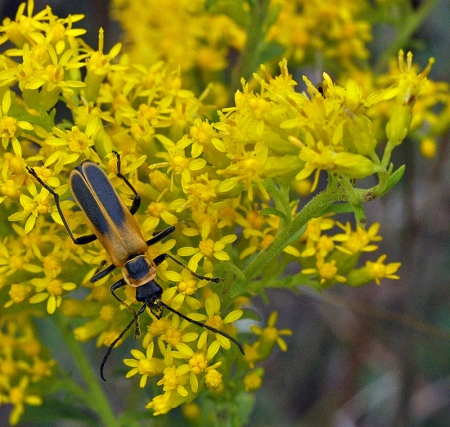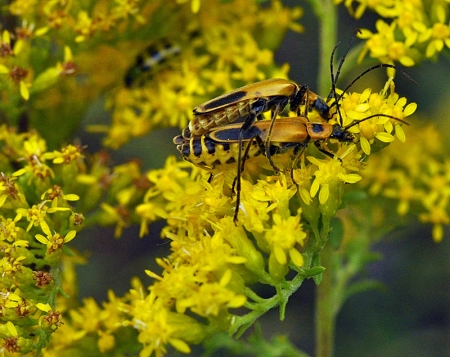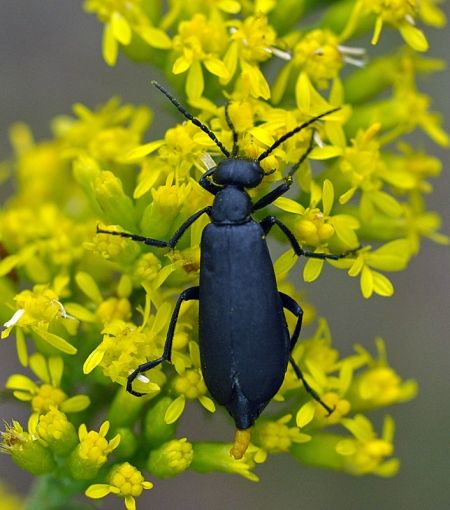Solidago, if you’re not familiar with the name, is the genus of plants commonly known as Goldenrods. With their clusters of yellow flowers and around a hundred difficult to distinguish species, they are nearly ubiquitous here in the Ozarks from August into November. Many hay fever sufferers mistakenly blame goldenrods for their misery (ragweed is really the prime culprit,) but Solidago species are pollinated by insects and their pollen is too heavy to be carried far by the wind. That pollen is apparently quite tasty because goldenrods attract a wide range of insects and their predators.
Goldenrods are found on roadsides, pastures and disturbed areas and since much of my yard qualifies as disturbed area, I have plenty of them close at hand. Last week, they were covered with two species of beetles. Nearly every plant had an individual or two from one or the other and in some cases both species were represented. The more common of the two was Chauliognathus pensylvanicus, the Goldenrod Soldier Beetle or Goldenrod Leatherwing.
The name leatherwing refers to the fact that the elytra is much softer than typical for beetles, but similar to what you see in the closely related fire flies/lightning bugs. Non-discriminatory when it comes to food choices, C. pensylvanicus will eat pollen and nectar, then munch on other insects when the opportunity presents itself.
When threatened, it produces a white fluid that contains an acetylene-like compound, dihydromatricaria acid. It’s an effective strategy — a long list of predators consistently avoid or reject them. That list includes centipedes, some spiders, ants, other beetle species, assassin bugs, mantids, birds and mice.
Epicauta pennsylvanica, the Black Blister Beetle, was the second species I was encountering. E. pennsylvanica shares more than just a very similar specific name with C. pensylvanicus. They also have relatively soft elytra and they too are chemical warriors. Molesting an E. pennsylvanica will result in it playing dead and secreting cantharidin, a substance that causes human skin to blister and leading to the species’ common name. Cantharidin is used medicinally to remove warts and tattoos. The male produces cantharidin, passes it to the female during mating and she then coats her eggs, protecting them from potential predators.
Large numbers of E. pennsylvanica will sometimes swarm into alfalfa fields, end up in bales of hay and are inadvertently eaten by horses, poisoning the horse if enough beetles are consumed. In humans, ingestion can cause severe damage to the lining of the gastrointestinal and urinary tract, and may also permanently damage the kidneys.
So if you find your self among the goldenrods, surrounded by beetles, look but don’t touch. And don’t eat the hay, ok?


